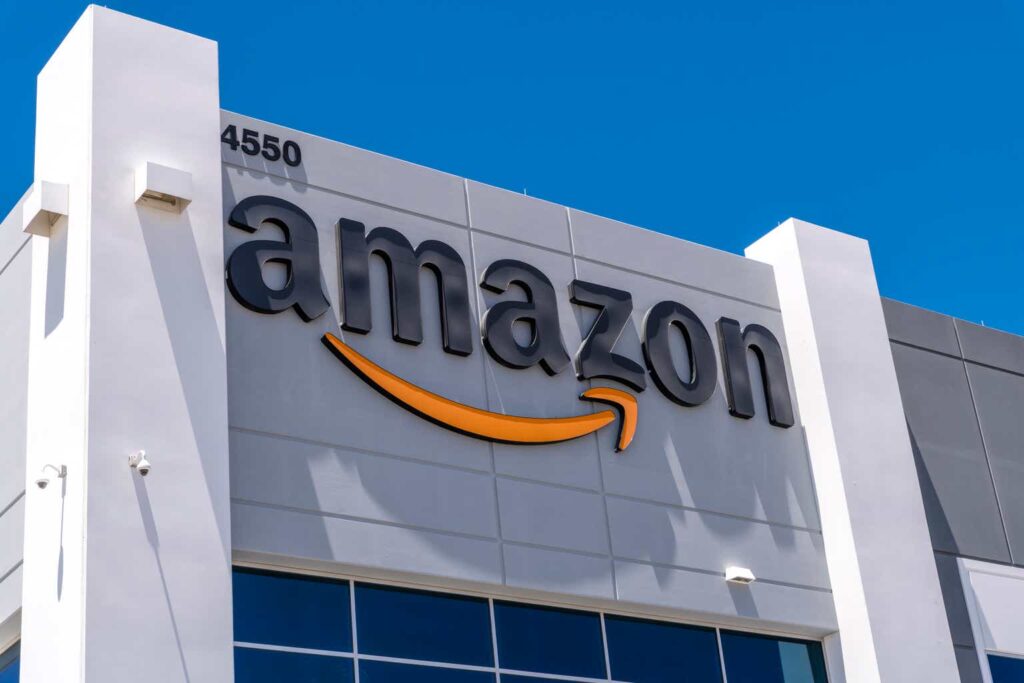4kodiak/iStock Unreleased via Getty Images
In my last article published in April 2024, I pointed out the double-digit revenue growth and significant margin expansion potential of Amazon (NASDAQ:AMZN)(NEOE:AMZN:CA)’s Third Party Seller Services. Amazon is scheduled to report its second quarter earnings after the close of trading on August 1. I believe that Third Party Seller Services and AWS will continue to drive Amazon’s growth for the next few years. I am reiterating my Strong Buy rating with a one-year price target of $240 per share.
Grocery Delivery Subscription
Amazon launched a grocery delivery subscription offer for Prime members and electronic benefit transfer customers in more than 3,500 U.S. cities on April 23. Amazon tested the market in three cities last year. For a monthly subscription fee of $9.99, Prime members can enjoy free delivery on orders over $35 at Amazon Fresh, Whole Foods Market and other grocery retailers.
I believe expanding into grocery delivery is critical for Amazon for the following reasons:
Amazon has over 200 million Prime members. The new subscription service could allow Amazon to further monetize its Prime membership and bring additional subscription revenue to its overall sales. The subscription provides one-hour delivery service at no extra cost where the service is available, which is very convenient for Prime members. In addition, customers have access to a variety of retail stores. The subscription service could increase Whole Foods’ competitive advantage and contribute to Whole Foods’ revenue growth. Amazon’s subscription fees are roughly the same as other food delivery service providers. For example, Instacart charges $3.99 for same-day orders over $35, but customers can subscribe to the Instacart+ service for $9.99 per month to get unlimited free delivery on orders over $35. As Amazon expands its grocery delivery service, we expect that Amazon will be able to offer more benefits to its subscribers by leveraging its larger scale compared to other smaller players.
Expecting huge growth in cloud
As we’ve noted in previous articles, AWS has been a major growth driver for Amazon over the past few years, with AWS growing 13% in Q4 FY23 and 17% YoY in Q1 FY24. Alphabet (GOOGL) reported 28.8% YoY growth in its cloud business in Q2 FY24, indicating robust demand for cloud computing among enterprise customers.
Most cloud hyperscalers noted that enterprise customers have begun optimizing their cloud infrastructure since the beginning of 2023. Over the past few quarters, these hyperscalers have indicated that enterprise optimization activity is easing. Strong growth in Google’s cloud business signals a strong recovery in cloud spending among enterprise customers, driven primarily by continued digitization and AI initiatives.
Outlook and assessment
For near-term earnings growth, we evaluate the following growth drivers:
AWS: As I have stated before, I expect AWS to continue to grow rapidly, driven by AI demand and digital transformation. In my opinion, it is clear that all hyperscalers, including Microsoft (MSFT), Amazon, and Alphabet, will grow their cloud infrastructure business by more than 20% in the near future. North American Business: As I have stated in my previous article, Amazon’s third-party services have been the primary growth driver for Amazon’s e-commerce business. These services leverage Amazon’s comprehensive services for payments, logistics, inventory management, and customer service. In addition, Amazon generates higher profits from third-party services compared to its own e-commerce business. Therefore, the rapid growth of third-party services will expand Amazon’s operating margins. I forecast the North American business to grow 12% per year. International Business: I assume the business will grow 12% per year, in line with its historical growth average.
Combining these factors, Amazon is projected to achieve revenue growth of 13.5% in the near future.
Amazon invested heavily in infrastructure such as logistics and warehousing during the global pandemic. In the post-pandemic era, Amazon has controlled its operating expenses and started to boost margins. Reported operating margins increased from 2.4% in FY22 to 6.4% in FY23. The DCF model projects margin expansion of 50 bps per year, assuming the following:
Gross margins expanded 10 bps due to growth in third-party services. Operating leverage from fulfillment costs increased 10 bps, leverage from R&D and content spending increased 20 bps and leverage from marketing costs increased 10 bps.
Here is a summary of DCF:
Amazon DCF – Author Calculation
Free cash flow from shareholders’ equity is calculated as follows:
Amazon DCF – Author Calculation
The cost of equity capital is calculated to be 14.3% assuming a risk-free rate of 4.2% ((US 10-year Treasury yield)), a beta of 1.44 (SA) and an equity risk premium of 7%. Discounting all FCFE, the DCF model calculates a one-year target price of $240 per share.
Downside risks
Temu and Shein have expanded their e-commerce operations in the United States over the past few years. These e-commerce platforms offer direct-to-consumer duty-free shipping from China, providing lower costs to U.S. shoppers. Such lower-cost e-commerce services could impact Amazon’s e-commerce growth. According to Meta (META) past earnings reports, these Chinese e-commerce companies spend heavily on advertising on the Facebook platform.
On June 26, Amazon announced that it would launch a discount section on its shopping site and ship products directly from China in an effort to compete with Chinese e-commerce platforms.
Amazon shareholders should closely monitor these Chinese e-commerce companies and the regulations imposed by U.S. Customs and Border Protection.
Note
I like the strength of Amazon’s third-party seller services and cloud infrastructure business powered by AI workloads. Both Amazon’s e-commerce and AWS businesses are likely to grow rapidly in the near future. I reiterate my Strong Buy rating with a one-year price target of $240 per share.

